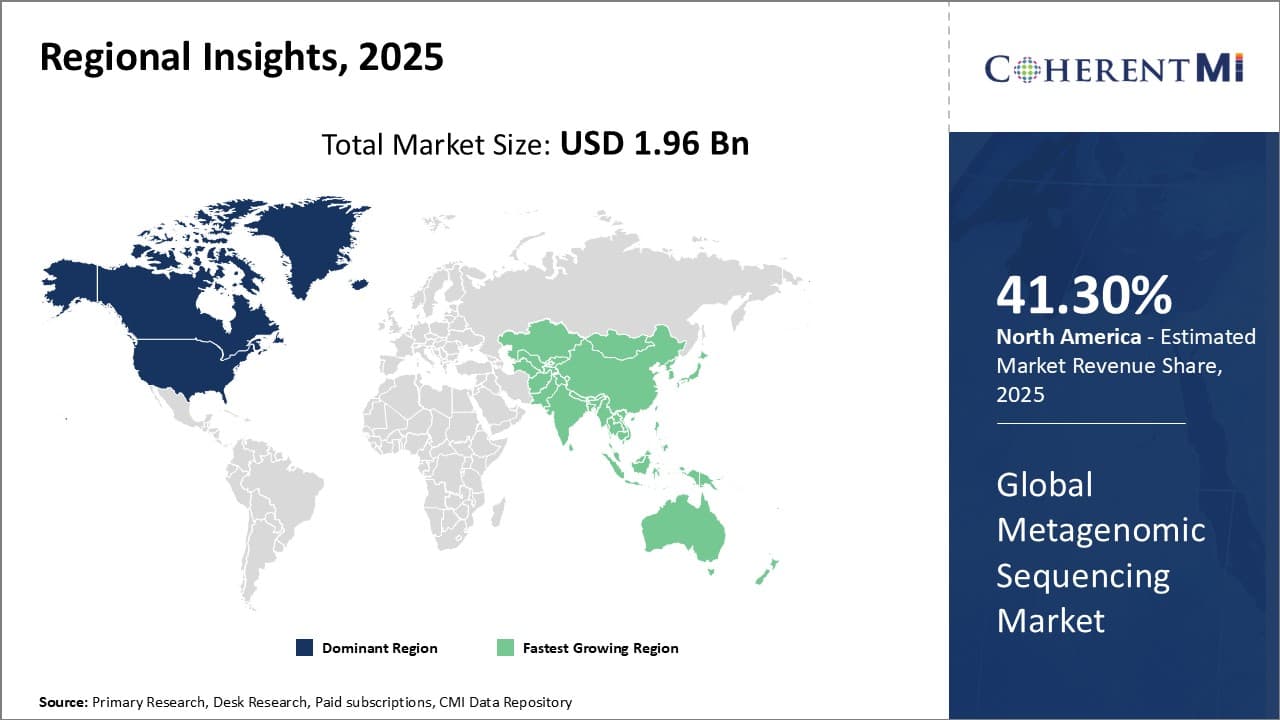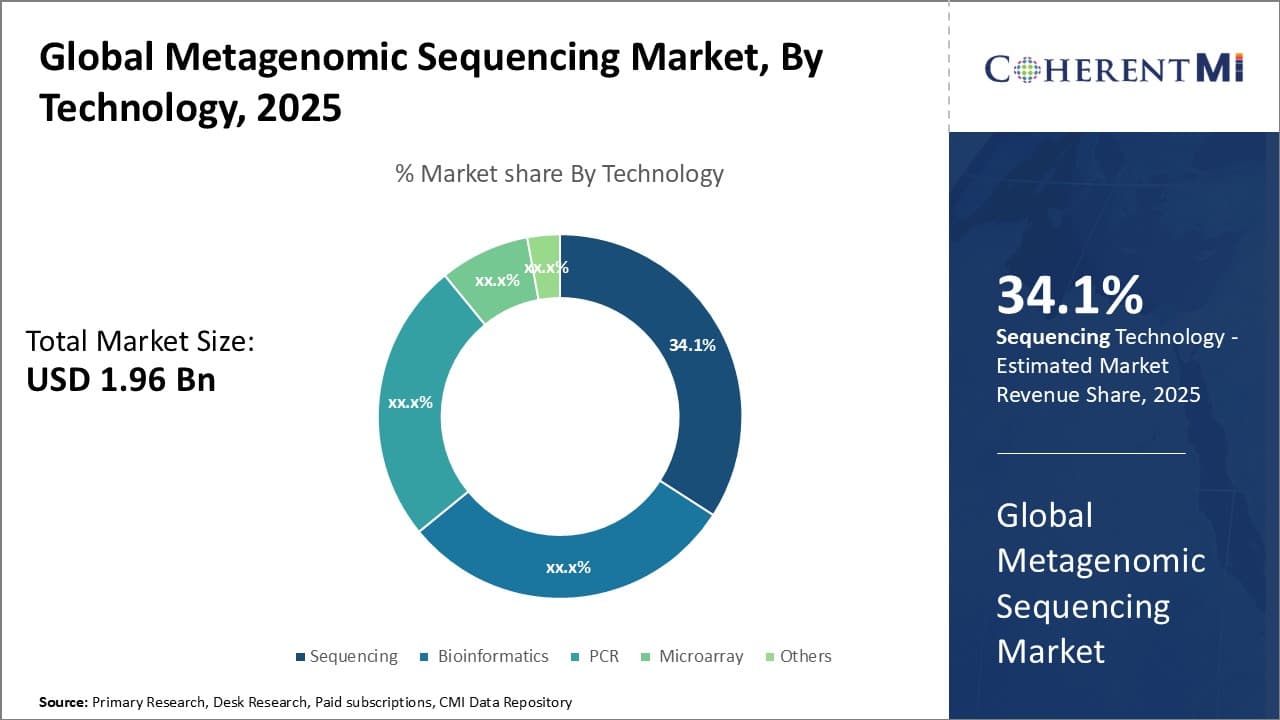

Global metagenomic sequencing market size is expected to reach US$ 6.16 Bn by 2032, from US$ 1.96 Bn in 2025, exhibiting a compound annual growth rate (CAGR) of 17.8% during the forecast period. Metagenomic sequencing refers to the direct genetic analysis of genomes that are contained within an environmental sample. It involves the study of genetic material recovered from environmental samples such as water or soil directly, without the need for culturing individual species. The technique provides a powerful tool to assess the biodiversity of microbial communities and understand their role in ecosystems. Metagenomic sequencing allows researchers to access and study the vast majority of microbes that cannot be cultured in a lab. It helps in identifying novel genes, enzymes, and natural products which have diverse applications in biotechnology, agriculture, medicine, renewable energy, bioremediation and more. The growth of the market is due to the decreasing costs of sequencing, advancements in sequencing technologies, growing genomics research, and rising government and private funding for metagenomics research.
The metagenomic sequencing market is segmented into technology, offerings, application, end user and region. By technology, the market is segmented into sequencing, bioinformatics, PCR, microarray, and others. The sequencing segment accounted for the largest share in 2025. The growth of this segment is due to the continuously declining costs of sequencing and technological improvements in Next-generation Sequencing (NGS) platforms.
Global Metagenomic Sequencing Market Drivers
Global Metagenomic Sequencing Market Opportunities
Global Metagenomic Sequencing Market Restraints
Counterbalance: complete reference databases should be made available by the market players to make correct analysis of the same.
Analyst’s View on Global Metagenomic Sequencing Market:
Global metagenomic sequencing market is expected to witness steady growth over the forecast period due to increased adoption of workforce management software and cloud-based platforms. It present an opportunity for stakeholders to optimize resource planning and allocation on a real-time basis and the rising demand for nurses caused by aging populations worldwide and increasing prevalence of chronic diseases. Developed markets in North America and Western Europe dominate due to higher allocation of resources to the healthcare sector compared to other regions
Market Size in USD Bn
CAGR17.8%
| Study Period | 2025-2032 |
| Base Year of Estimation | 2024 |
| CAGR | 17.8% |
| Fastest Growing Market | Asia Pacific |
| Larget Market | North America |
| Market Concentration | High |
| Major Players | Illumina, QIAGEN, Thermo Fisher Scientific, Oxford Nanopore Technologies, BGI Group and Among Others |
Global Metagenomic Sequencing Market Regional Insights
 To learn more about this report, Download Free Sample Copy
To learn more about this report, Download Free Sample Copy
 To learn more about this report, Download Free Sample Copy
To learn more about this report, Download Free Sample Copy
Illumina, QIAGEN, Thermo Fisher Scientific, Oxford Nanopore Technologies, BGI Group, PerkinElmer, GENEWIZ, Macrogen, Zymo Research, Diversigen, Microsynth AG, BaseClear, MR DNA (Molecular Research), Eurofins Scientific, Novogene Corporation, NuGEN Technologies, Takara Bio, Swift Biosciences, New England Biolabs, and CosmosID
New product launches
Acquisition and partnerships
Would you like to explore the option of buying individual sections of this report?
Abhijeet Kale is a results-driven management consultant with five years of specialized experience in the biotech and clinical diagnostics sectors. With a strong background in scientific research and business strategy, Abhijeet helps organizations identify potential revenue pockets, and in turn helping clients with market entry strategies. He assists clients in developing robust strategies for navigating FDA and EMA requirements.
Global Metagenomic Sequencing Market is Segmented By Technology (Sequencing, Bioinformatics, PCR, Mi...
Global Metagenomic Sequencing Market
How big is the Global Metagenomic Sequencing Market?
The Global Metagenomic Sequencing Market is estimated to be valued at USD 2.0 in 2025 and is expected to reach USD 6.2 Billion by 2032.
What are the major factors driving the metagenomic sequencing market growth?
Decreasing sequencing costs, technological advancements in sequencing platforms, growth of metagenomics research, and government and private funding are the major factors driving the metagenomic sequencing market growth.
Which is the leading technology segment in the metagenomic sequencing market?
Sequencing segment is the leading technology segment in the metagenomic sequencing market.
Which are the major players operating in the metagenomic sequencing market?
The major players are Illumina, QIAGEN, Thermo Fisher Scientific, Oxford Nanopore Technologies, BGI Group, PerkinElmer, GENEWIZ, Macrogen, Zymo Research, Diversigen, Microsynth AG, BaseClear, MR DNA (Molecular Research), Eurofins Scientific, Novogene Corporation, NuGEN Technologies, Takara Bio, Swift Biosciences, New England Biolabs, and CosmosID
Which region will lead the metagenomic sequencing market?
North America leads the metagenomic sequencing market.
What will be the CAGR of metagenomic sequencing market?
The CAGR of the metagenomic sequencing market is 17.8%.